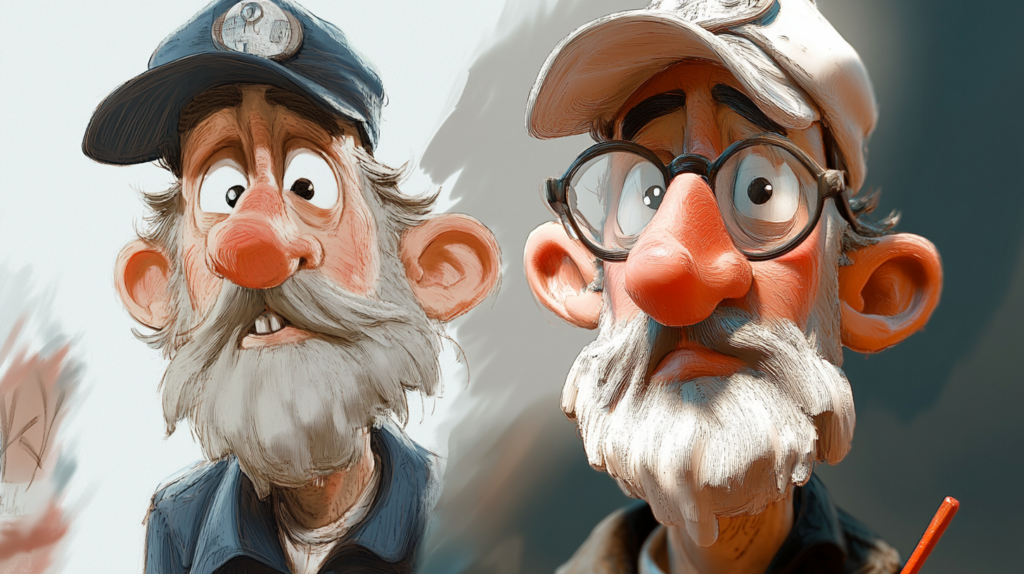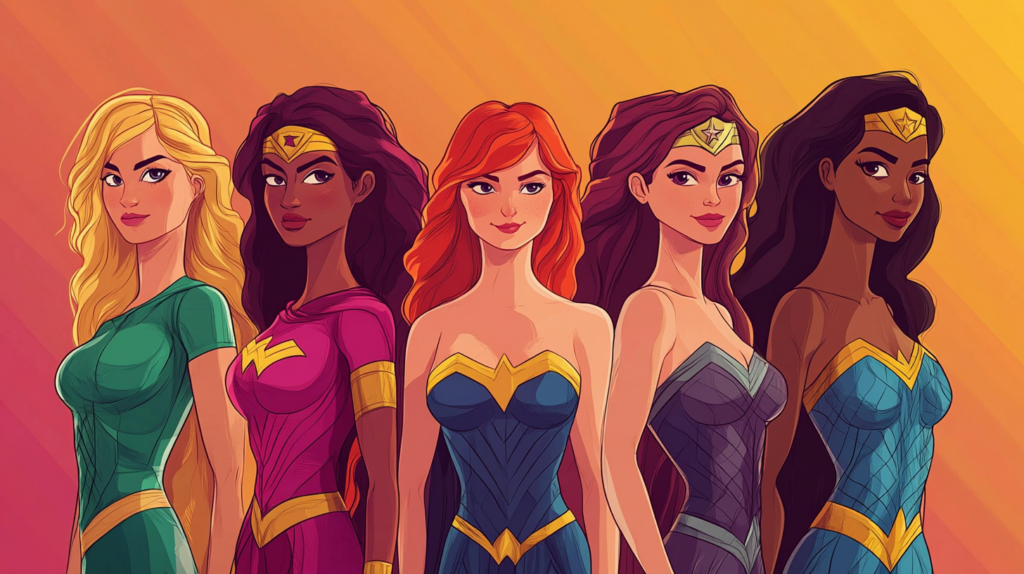Creating Characters: Creating an iconic cartoon character is a blend of artistry, storytelling, and an understanding of human psychology. These characters often become cultural touchstones, resonating with audiences across generations. But what makes a cartoon character iconic? How do artists bring these figures to life, imbuing them with personalities that captivate millions? Let’s delve into the process behind creating iconic cartoon characters, from initial concept to enduring legacy.
Creating Characters
1. The Foundation: Understanding the Purpose
The first step in creating an iconic cartoon character is understanding the character’s purpose. Is the character meant to entertain, educate, or convey a particular message? Characters like Mickey Mouse were created primarily for entertainment, while others, like Smokey Bear, were designed to educate and promote public service messages. Understanding the character’s purpose helps guide decisions about design, personality, and story.
2. Defining the Core Concept
Once the purpose is clear, the next step is to define the core concept of the character. This involves deciding on the character’s role, traits, and the world they inhabit. For example, Superman’s core concept as a superhero involves traits like strength, justice, and invincibility, set in a world where good battles evil. The core concept should be simple yet powerful, allowing the character to be easily understood and remembered by audiences.

3. Sketching Initial Ideas
The visual design of a character begins with sketching. Artists often create numerous rough sketches to explore different looks and personalities. These sketches help to experiment with shapes, proportions, and expressions. During this phase, the character’s silhouette is crucial—iconic characters often have distinctive outlines that make them recognizable even in silhouette form, like the round ears of Mickey Mouse or the spiky hair of Bart Simpson.
4. Establishing a Unique Personality
A character’s personality is what makes them relatable and memorable. Creating a unique personality involves thinking about the character’s strengths, weaknesses, motivations, and quirks. For instance, Bugs Bunny’s mischievous and confident personality, paired with his clever catchphrases, makes him stand out. The personality should complement the character’s visual design and align with the stories they will be involved in.

5. Refining the Design: Shapes, Colors, and Details
After the initial sketches, the design is refined by focusing on shapes, colors, and details. Simplicity is often key—many iconic characters, like SpongeBob SquarePants or Hello Kitty, are designed with basic shapes and bold colors that make them visually appealing and easy to reproduce. Color choices are also crucial; they can evoke certain emotions or symbolize traits (e.g., Superman’s red and blue costume representing heroism and bravery).
6. Creating a Memorable Voice
The voice of a character is just as important as their visual design. A memorable voice can add depth to the character’s personality and make them more engaging. Think of the raspy voice of Donald Duck or the deep, authoritative tone of Optimus Prime. The process involves finding the right voice actor who can bring the character’s personality to life and create a distinct vocal identity that matches the character’s appearance and traits.

7. Developing Backstory and Relationships
A well-rounded character often has a backstory and relationships that give them depth. For example, Batman’s backstory of losing his parents adds a layer of tragedy and motivation to his character. Additionally, relationships with other characters, such as the dynamic between Tom and Jerry, can create engaging and enduring storylines. These elements help audiences connect with the character on a deeper level, beyond just their surface traits.
8. Testing and Iteration
Before a character becomes iconic, they often go through numerous iterations based on feedback from test audiences or the creators themselves. Testing different versions of the character in various scenarios can help refine their design, personality, and overall appeal. For instance, early versions of Mickey Mouse were adjusted to make him more likable, leading to the character we know today.

9. Integrating Catchphrases and Signature Moves
Many iconic cartoon characters have catchphrases or signature moves that make them instantly recognizable. Phrases like “What’s up, Doc?” or “I’ll be back!” become synonymous with the character and help cement their identity in popular culture. These elements should be natural extensions of the character’s personality and story, adding to their uniqueness and appeal.
10. Creating a Consistent World
The world a character inhabits plays a significant role in shaping their identity. Whether it’s the bustling streets of Gotham City or the whimsical town of Springfield, the setting should complement the character’s traits and stories. A consistent and engaging world allows the character to thrive and provides endless opportunities for storytelling, helping to build a rich, immersive experience for the audience.

11. Building Emotional Connections
To become iconic, a character must forge an emotional connection with the audience. This connection often comes from the character’s struggles, triumphs, and growth over time. Characters like Simba from The Lion King resonate because audiences relate to his journey of self-discovery and overcoming adversity. By giving the character relatable experiences and emotions, creators can foster a deep bond between the character and the audience.
12. Evolving with Time
Iconic characters often evolve to stay relevant. Over time, their design, personality, and stories may adapt to reflect changing societal norms, technologies, or audience preferences. For example, characters like Scooby-Doo and the Teenage Mutant Ninja Turtles have undergone various redesigns and story updates to appeal to new generations. This evolution ensures that the character remains fresh and engaging, even as the world around them changes.

13. The Role of Merchandising
Merchandising plays a critical role in solidifying a character’s iconic status. From toys and clothing to video games and theme parks, merchandise helps keep the character in the public eye and allows fans to engage with them in new ways. Characters like Pikachu or Hello Kitty have become global icons partly due to their extensive merchandise presence. The design of the character must be adaptable to various forms of merchandise, ensuring that they remain recognizable and appealing across different mediums.
14. Cultivating a Fanbase
A strong fanbase is essential for a character to achieve iconic status. Engaging with fans through social media, fan conventions, and other platforms can help build a community around the character. Fans often contribute to the character’s legacy through fan art, cosplay, and fan fiction, further embedding the character in popular culture. Creators should encourage this engagement and consider fan feedback when evolving the character.
15. Legacy and Longevity
The true test of an iconic character is their longevity. Characters that endure for decades or even centuries often do so because they resonate on a fundamental level with human experiences and emotions. These characters become more than just entertainment; they become symbols of certain ideals, values, or experiences. The creators’ commitment to maintaining the character’s integrity while allowing them to grow and adapt is key to their lasting impact.
Conclusion: The Art and Science of Creating Icons
Creating an iconic cartoon character is both an art and a science. It requires a deep understanding of storytelling, design, and audience psychology, combined with creativity and innovation. Iconic characters are those that resonate with audiences, evoke emotions, and stand the test of time. By carefully crafting every aspect of the character—from their visual design to their personality, voice, and backstory—creators can bring to life figures that not only entertain but also leave a lasting mark on culture and society.




4 Comments